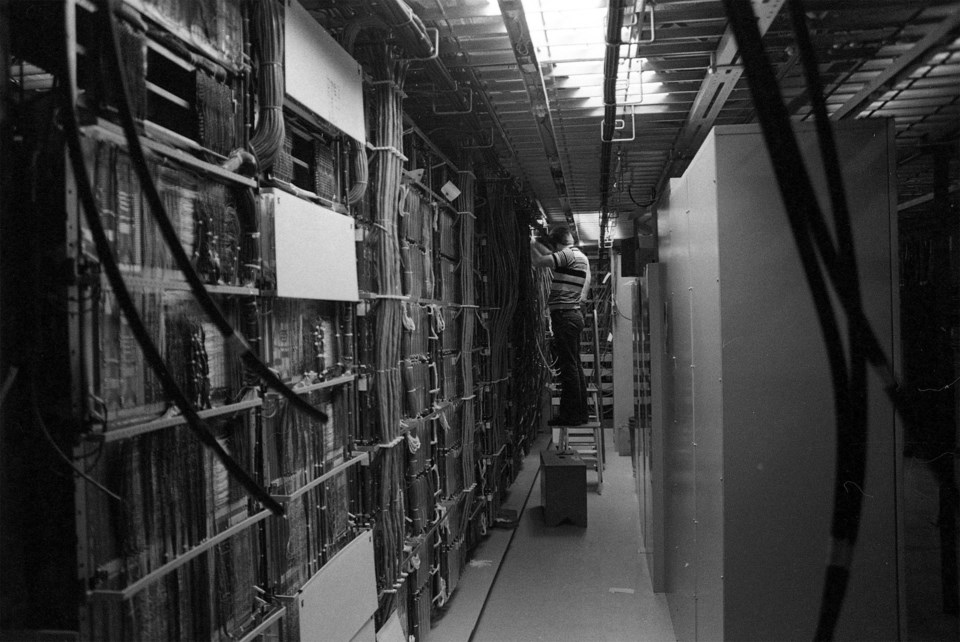Placing a phone call in Whistler hasn’t always been as simple as picking up the nearest phone and punching in a number or selecting a contact. For those living at Alta Lake before 1957, placing a call could mean heading over to the Pacific Great Eastern Railway (PGE) station or one of the lodges that were connected by BC Tel. The first telephone line in the Whistler Valley was maintained by linemen of the PGE and BC Tel, and reportedly had better reception at night. Quite a few different people served as linemen over the years, including Bob Williamson, who moved to the area for the job in 1930, Howard Gebhart, Loyd and Doug Mansell, and Glen Creelman.
In 1957, a double copper line was installed and an open circuit line around Alta Lake was established. This linked most of the lodges and cottages around the lake using wall-crank telephones (you can find one of these telephones on display in the museum’s exhibits). Each residence had its own identifying “jingle,” a combination of long and short rings representing a letter in Morse code, to let those connected to the line know who was the intended recipient of a call. Such lines were not uncommon in rural areas and could present unique challenges; party lines could be monopolized by one party using the line and offered little privacy, as others could pick up the phone and listen in. They could be effective, however, when trying to alert neighbours of emergencies.
According to the Alta Lake Echo, the newsletter of the Alta Lake Community Club, a microwave system was installed in the early months of 1960 and telephones in the area were put on new circuits for Alta Lake and Garibaldi. BC Tel’s “932” circuit followed, a number still found in many Whistler telephone numbers today.
In 1980, BC Tel built a new office in Whistler to house a new “ultra-modern” telephone system. The new office, located on Lorimer Road, included space for three service trucks, a level for service equipment, and a diesel generator that would cut in automatically when the power went out to keep the phones going. The office was also going to be run electronically, programmed by a tape-fed computer, without any need for mechanical switching and therefore requiring no staff on site. Instead, it would be connected to Vancouver and Squamish with an alert system in case of any malfunction.
The new system promised more efficient service, with automatic direct dial and collect-call dial, an option for a touch phone rather than a rotary dial, and direct calling to 38 countries. This also meant you no longer had to give your number when dialling long-distance, though you did now have to dial the whole number when calling another Whistler line. The lines around Whistler were upgraded during the summer and fall of 1980 in order to be ready for the new system in November.
The switchover to the new system occurred on schedule over the night of Sunday, Nov. 16 in order to be operational for Monday, Nov. 17. Although BC Tel crews worked through the night, it did not go entirely smoothly, and by Monday morning more than 100 phone lines in Whistler (including one belonging to the Whistler Question) were “completely dead.” According to Phil McLaren, the Network Operations Supervisor for BC Tel, this was caused by a series of cables that were connected “differently than expected,” and it was still being repaired on the Tuesday.
At the time, the new office served about 1,400 customers in the Whistler area and had the capacity for about 3,000, with room in the office to expand up to 20,000. Today, the number of phone lines in Whistler has grown far past the open circuit line of Alta Lake, and the phones used to make calls look very different than the wall-crank telephones of the 1950s or even the touch phones of the 1980s.




